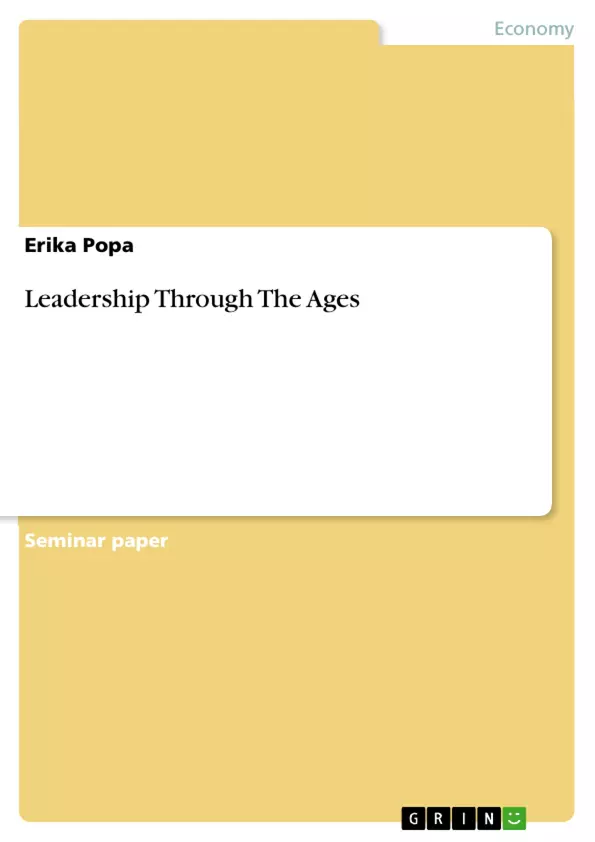Megatrends such as globalization, digitalization, individualization, volatility, and increasing diversity are considered to be the triggers of a noticeable change in the work environment. This results in a reinvention of many companies currently taking place with regard to their corporate structure. The changes affect the entire work environment, interactions and undoubtedly leadership at all levels of companies. In connection with the new environment, discussions often arise in research and practice as to what role leadership actually still plays in companies and whether it is still in line with the times.
How has the role of the manager changed in the last 10 years? The aim of this paper is to compare the different leadership styles and to show to what extent the social competence of a manager can influence the success of change processes. What is the significance of social competence for successful leadership? What can sustainable leadership look like?
Inhaltsverzeichnis (Table of Contents)
- Introduction
- Definitions Leadership and Change
- Leadership style
- The classic leadership styles
- Leadership in the modern age
- Leadership styles in relation to change
- Contemporary roles of the manager
- Working on the system instead of in the system
- Organisation of learning
- Manager as consultant and coach
- Promoting by demanding
- Change management in organizations and reasons for change
- Change management and organizational change process
- When and how change occurs
- Reasons for change
- Competencies of managers in change
- Organizational development access to change
- Social competence as a key competence of the manager
- Emotional intelligence
- Social competence
- Social competence as a key factor
- Future perspectives and solutions
Zielsetzung und Themenschwerpunkte (Objectives and Key Themes)
This term paper aims to compare different leadership styles and demonstrate the influence of social competence on the success of change processes. The paper explores the significance of social competence for effective leadership and considers the possibilities of sustainable leadership.
- Evolution of leadership styles throughout history
- The impact of social competence on successful change management
- The role of managers in facilitating and driving organizational change
- The importance of emotional intelligence and social competence in modern leadership
- Future perspectives and potential solutions for leadership in the context of organizational change
Zusammenfassung der Kapitel (Chapter Summaries)
Chapter 2 examines the concepts of leadership and change, focusing on definitions of organizational change and employee management. Chapter 3 presents the classic leadership styles according to Weber, Lewin, Tannenbaum, and Schmidt, along with modern leadership approaches and the relationship between leadership styles and change. Chapter 4 explores the contemporary roles of managers and the integration of coaching into organizational development. Chapter 5 delves into change management in organizations, examining the organizational development approach to change and the competencies of managers in change processes. Chapter 6 focuses on social competence and its significance as a key factor for successful leadership in change processes. Chapter 7 provides an overview of future prospects for leadership.
Schlüsselwörter (Keywords)
The paper focuses on leadership, change management, organizational development, social competence, emotional intelligence, and modern leadership styles. The work examines the impact of these concepts on effective leadership and successful change processes.
- Quote paper
- Erika Popa (Author), 2017, Leadership Through The Ages, Munich, GRIN Verlag, https://www.grin.com/document/1180592



